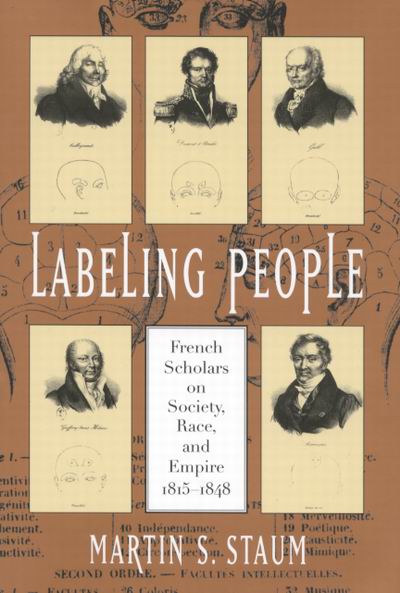Labeling People: French Scholars on Society, Race, and Empire, 1815-1848Posted in Books, Europe, History, Media Archive, Monographs, Social Science on 2009-11-18 18:58Z by Steven |
Labeling People: French Scholars on Society, Race, and Empire, 1815-1848
McGill-Queen’s University Press
2003-08-20
264 pages
6 x 9
15 drawings
Cloth ISBN: (0773525807) 9780773525801
Martin S. Staum, Professor of History
University of Calgary
An examination of techniques used by scholarly societies to classify people that constructed the image of an inferior “Other” to promote social stability at home and a relationship of domination or paternalism with non-Europeans abroad.
Nineteenth-century French scholars, during a turbulent era of revolution and industrialization, ranked intelligence and character according to facial profile, skin colour, and head shape. They believed that such indicators could determine whether individuals were educable and peoples perfectible. In Labeling People Martin Staum examines the Paris societies of phrenology (reading intelligence and character by head shapes), geography, and ethnology and their techniques for classifying people. He shows how the work of these social scientists gave credence to the arrangement of “races” in a hierarchy, the domination of non-European peoples, and the limitation of opportunities for ill-favored individuals within France.
While previous studies have contrasted the relative optimism of middle-class social scientists before 1848 with a later period of concern for national decline and racial degeneration, Staum demonstrates that the earlier learned societies were also fearful of turmoil at home and interested in adventure abroad. Both geographers and ethnologists created concepts of fundamental “racial” inequality that prefigured the imperialist “associationist” discourse of the Third Republic, believing that European tutelage would guide “civilizable” peoples, and providing an open invitation to dominate and exploit the “uncivilizable.”
